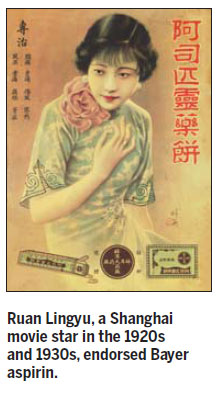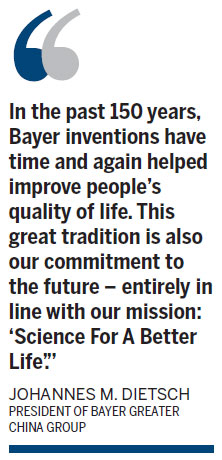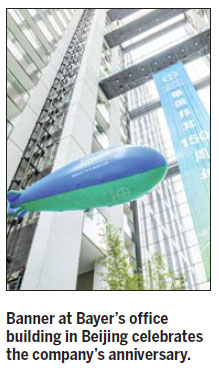Pharmaceutical and chemical giant Bayer recently expanded its polymer research and development center in Shanghai, making it an innovation center for the Asia-Pacific region.
The state-of-the-art facility using Bayer's global standards focuses on innovations in the use of high-performance plastics, foams and coatings in such key sectors as mobility, construction, IT and renewable energy, according to the company.
The regional hub will become a significant contributor to Bayer MaterialScience's overall global innovation network which aims to become indispensable in terms of competencies, projects and products and reach a global innovation footprint for Bayer MaterialScience and its partners by exporting China-developed technology to the rest of the world by 2020, according to the company.
The Shanghai center will provide support to R&D facilities in South Korea, India and Japan, as well as China's Taiwan, the company announced.
It is the third phase expansion of the center since it was founded in 2001.

he inauguration of the regional innovation hub is in line with China's promotion of indigenous innovation and enhancing R&D as laid out in the 12th national Five-Year Plan (2011-15), Li Yongwu, chairman of China Petroleum and Chemical Industry Federation, told local media.
In addition, the metropolis is also home to an integrated facility that makes polyurethane, polycarbonates and coatings.
The Bayer Integrated Site Shanghai is the largest investment outside Germany, totaling 2.1 billion euros ($2.84 billion) by 2012.
Johannes M. Dietsch, president of Bayer Greater China Group, noted another center of innovation for Bayer on the Chinese mainland is in Beijing, home to the company's fourth global Bayer HealthCare R&D center as well as its global headquarters for primary care.
One of the largest healthcare companies in China, Bayer HealthCare improves access to medical services and provides solutions to control and cure diseases with high morbidities.
Growth with China
Bayer's presence in China dates back more than 130 years when the company began supplying dyes in 1882, and then founded a trading company in Shanghai in 1913.
In 1989 Bayer became the first Western company to set up an agrochemical joint venture after the country began its opening-up in the late 1970s. It now has 24 legal entities, 12 production sites and 13,000 employees in the country.
China is now Bayer's third-largest single market globally after Germany and the United States, and No 1 in the Asia-Pacific region, Dietsch said. "We are confident that our business in this market will continue experiencing strong growth in the future."

"We have well aligned our core businesses and innovation development with China's pressing demands in achieving sustainable growth."
Among its operations in the country, Bayer CropScience is one of the top three multinational companies involved in crop protection with more than 40 products introduced to China in the past 10 years.
And 20 new products will be launched on the Chinese market from 2014 to 2020.
Legacy of innovation
Since its founding in 1863, Bayer has long invested heavily in research, laying a sound foundation for its current focus on healthcare, agriculture and high-tech materials.
In 1899, the company brought the revolutionary pain reliever aspirin to market. Bayer HealthCare's current focus is on infective diseases, cardiovascular conditions, anticoagulants, cancers, women's healthcare, neurology and hemophilia.
Agriculture is another focal point of the company's research. Since it introduced Antinonnin, the world's first synthetic insecticide, made to control the nun moth in 1892, scientists working with Bayer have developed an array of innovative chemicals.
Today, Bayer CropScience continues to be a pioneering innovator in the areas of seeds, crop protection and non-agricultural pest control, offering sustainable solutions for agriculture.
At the same time, Bayer has been a pioneer in the development of high-performance materials.
Both polyurethanes for foams, which were discovered by company researchers in the 1930s, and Makrolon, a polycarbonate patented in 1953, continue to form the basis of an ever-growing range of applications.
Bayer MaterialScience currently supplies high-performance materials and system solutions that are used in a wide range of products for everyday life.
Last year, Bayer spent around 3 billion euros ($4 billion) on R&D. Nearly 13,000 scientists now work with Bayer Group worldwide.
What started as a small but innovative dyestuffs factory in the Barmen district of Wuppertal is now a global group company with more than 110,000 employees, Dietsch said.
"In the past 150 years, Bayer inventions have time and again helped improve people's quality of life. This great tradition is also our commitment to the future - entirely in line with our mission: 'Science For A Better Life'."
|
Johannes M. Dietsch, president of Bayer Greater China Group, describes the company's history of innovation over the past 150 years at a press conference in Beijing on Wednesday. Provided to China Daily |

